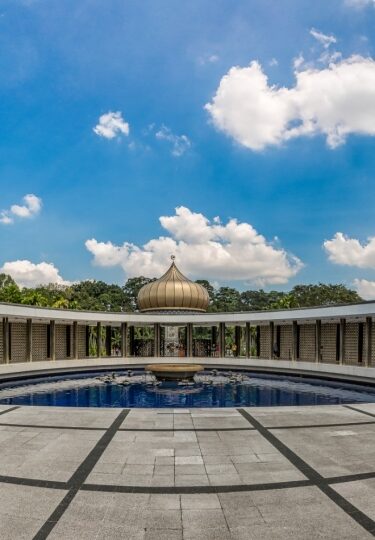The best time to visit Malaysia is the winter months, between late November and February, when temperatures are slightly lower than the rest of the year. The west coast islands of Langkawi and Penang also receive less rainfall during these months.
Generally speaking, though, Malaysia’s climate has little variation, with warm weather and high humidity year-round. As the country is close to the equator and surrounded by the sea, there is no dry season, as such.
Average temperatures are around 86°F (30°C), with humidity usually above 80 percent. Sea temperatures are delightfully warm for swimming and snorkeling.
A typical day in Malaysia would bring sunshine in the morning, with humidity building up throughout the day, and short, sharp thunderstorms or rain showers in the early evening. So prepare for the tropics, bring a light waterproof jacket, stay hydrated, and pace yourself when it comes to outdoor activities.
Visiting Malaysia By Season
Summer
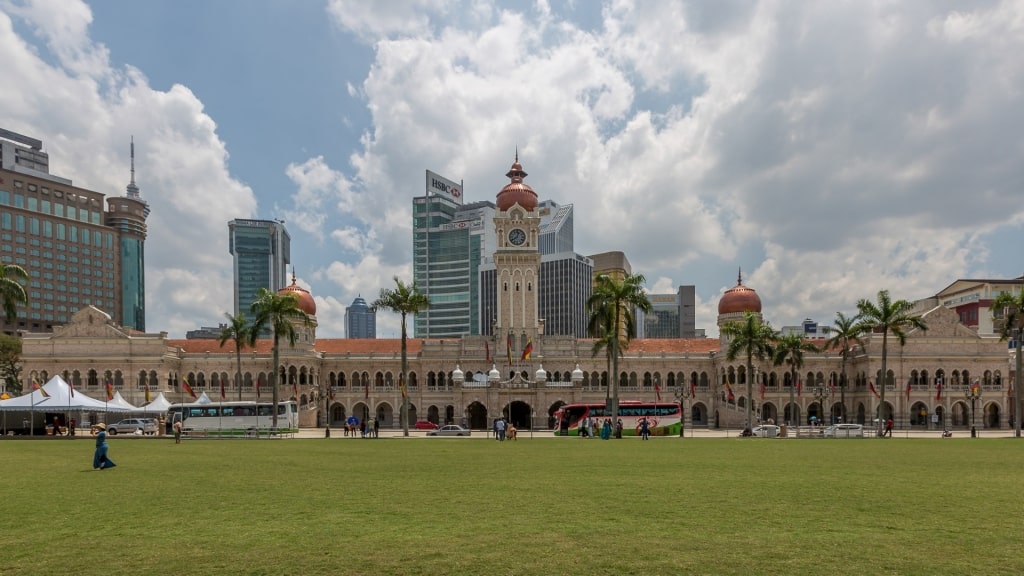
Independence Square, Kuala Lumpur
June, July, and August are a good time to visit Kuala Lumpur, the capital, as there’s less rain close to the equator during these hot summer months.
Elsewhere, though, the summer months are hot and humid, with frequent rain showers. The weather can change quickly from sunny and clear to overcast and rainy. Essentially, you’ll need to prepare for all eventualities if you travel in summer.
Fall
Fall brings the monsoon to most of Malaysia, with heavy rain most days. While this is not the best time for the beach, it does mean that the rainforest is at its most lush.
Kuala Lumpur receives high rainfall in November, when you can expect an average of 11.4 inches (290mm) of rain in the capital city. In Malaysia, rain is simply part of daily life.
As fall progresses, the monsoon tails off, with rain giving way to finer weather as November progresses. There are festivals to look forward to in fall, too. The Chinese community celebrates the Mid-Autumn Festival with lanterns and feasting. Deepawali, which falls in October or November and is celebrated by the Hindu population, is a time for celebrations and fireworks.
Spring
The weather in Malaysia in March, April, and May is relatively stable, with lower rainfall and less wind. These are good months for hiking and watersports. The island of Borneo and the north east coast of peninsular Malaysia are enjoying their dry season during these months.
The temperature is, however, increasing. Don’t be surprised to encounter highs of up to 100°F (38°C) in March and April.
Winter
Winter is the best time to go to Malaysia if your destination is the west coast and the islands of Penang and Langkawi. The months from December to February are slightly cooler and mainly sunny and dry.
In Penang, the average rainfall in January and February is 2.8 inches (70mm), which is low for Malaysia. Langkawi, too, is relatively dry during the winter months as the wind blows from the island’s interior. It’s still hot, though, with highs of around 89°F (32°C).
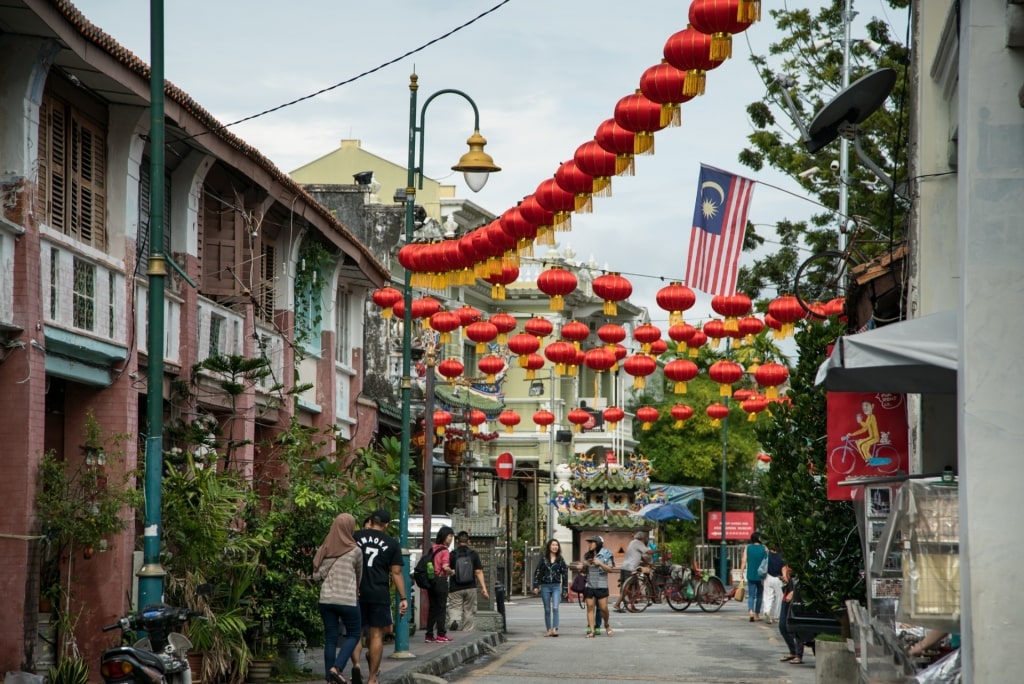
George Town, Penang
This is also a period of celebration and festivals, from the Dragon Boat Festival in Penang to Chinese New Year, which usually falls in February but follows the lunar calendar.
January is also the coolest month, all things being equal, to visit Kuala Lumpur, with lows of around 73°F (23°C).
When Is Rainy Season?
Rainy season in Malaysia varies according to where you are. The west coast of peninsular Malaysia sees heavier rainfall in September, October, and November, while the east coast of the peninsula is wettest from November to March.
October is the rainiest month in Langkawi, with 14.8 inches (375mm) of rainfall on average. But the monsoon is unpredictable and its arrival can vary from year to year.
When Is High Season?
High season in Malaysia varies according to which coast you’re on, or whether you want to visit peninsular Malaysia or the island of Borneo. The monsoons and relatively drier months vary from coast to coast, and from north to south.
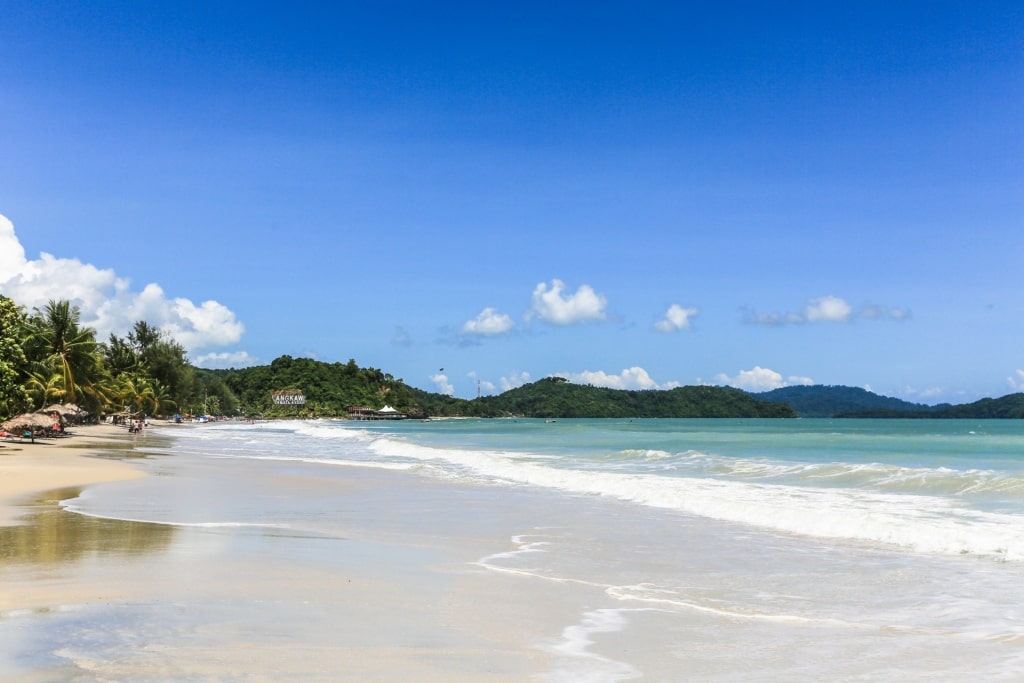
Pantai Cenang, Langkawi
High season in Penang and Langkawi is January and February, when the sea is calm and the weather relatively dry. This is the best time for relaxing on Malaysia’s best beaches, snorkeling, or hiking in Langkawi’s jungly mountains.
February usually coincides with Chinese New Year, too, when you’ll see exuberant celebrations and parades, wherever you go.
When Is Shoulder Season?
On the west coast, shoulder season falls in March, after the busy period of January and February. This is still a good time to visit Malaysia, with good beach weather and clear seas, but you do need to prepare yourself for the heat.
June, July, and August are also shoulder season months in Langkawi and Penang. Expect hot weather but relatively little rain.
When Is Low Season?
The low season in peninsular Malaysia is during the monsoon, in September and October. There will be much less sunshine during these months and the sea will be murky, making it less attractive for snorkeling.
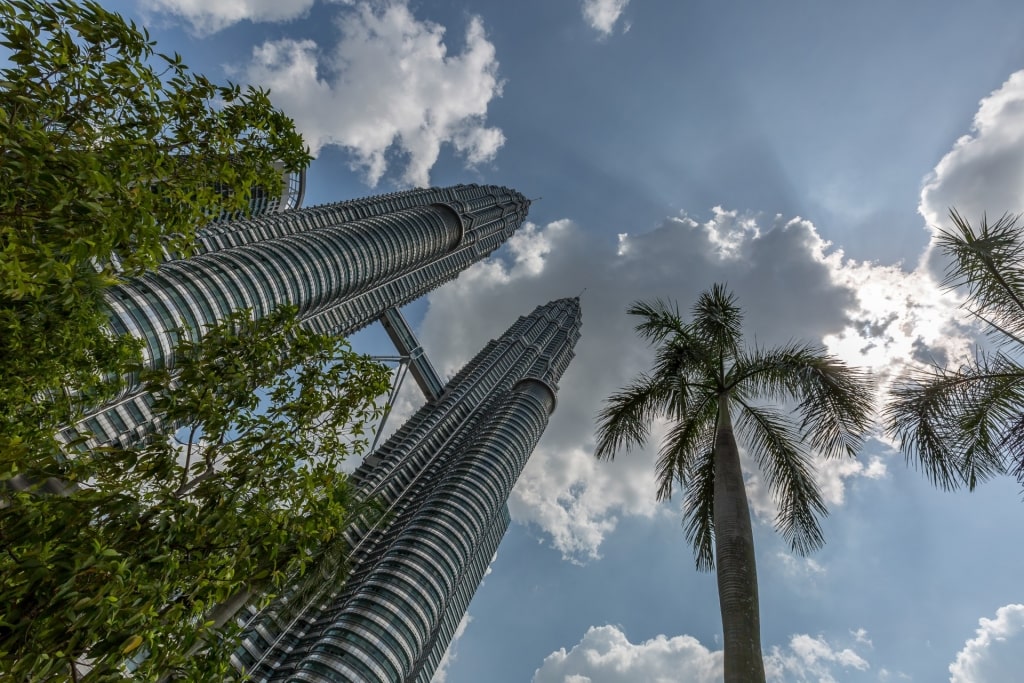
Kuala Lumpur
Experience rich culture and beautiful landscapes on a cruise to Malaysia with Celebrity Cruises. Browse itineraries and plan your next adventure.
